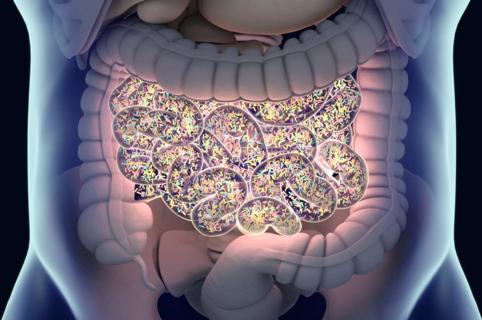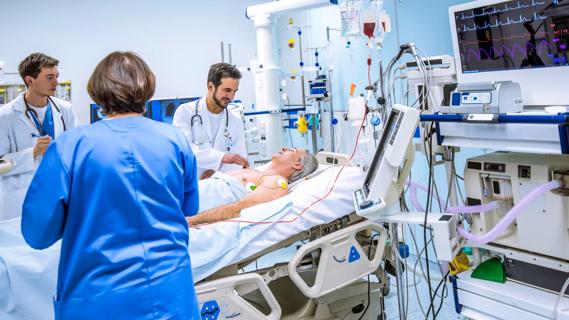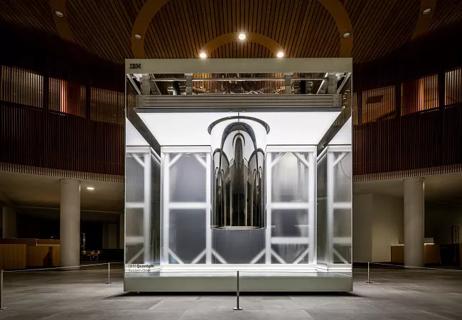Research takes us a step closer

Tens of millions of patients worldwide take warfarin to prevent life-threatening blood clots. The drug is more effective in some patients than others, however, and determining dosage for individual patients can be problematic. Researchers are working to more clearly understand warfarin’s biological effects in the body to overcome these limitations.
Advertisement
Cleveland Clinic is a non-profit academic medical center. Advertising on our site helps support our mission. We do not endorse non-Cleveland Clinic products or services. Policy
Researchers know that warfarin interrupts the vitamin K cycle. New research from Lerner Research Institute published in Blood has uncovered for the first time new details about how warfarin interacts with part of this process and clues to improving its efficacy in individual patients.
The second phase of vitamin K cycle is known to be interrupted by warfarin. This phase consists of two steps: vitamin K epoxide (KO) is converted to vitamin K (step 1), then to KH2 (step 2). Both steps are catalyzed by a very important enzyme called VKORC1 (vitamin K epoxide reductase complex subunit 1). Warfarin blocks VKORC1 from working properly.
Until now, researchers had not studied whether VKORC1 was responsible for both steps of the vitamin KH2 regeneration. Because KH2 is very sensitive to oxygen degradation, it is difficult to study in the laboratory. For the first time, a research team led by Kathleen Berkner, PhD, was able to recreate the reaction in a sealed nitrogen system free of oxygen and also study both steps in a cell-based assay.
Strikingly, the team found that warfarin inhibition of VKORC1 was much more potent for complete regeneration of KH2 than for the first step of the conversion. Thus, they observed that in the presence of warfarin, the two steps become uncoupled, meaning that step 1 does not efficiently result in step 2. Yet while KH2 regeneration by VKORC1 is halted, KH2 continues to be produced in patients on warfarin.
How is KH2 produced when the catalytic enzyme VKORC1 is inhibited? Because the first step is only weakly blocked, vitamin K intermediate is still generated. Consequently, a new unidentified enzyme can enable the conversion to KH2 to continue. This “mystery” enzyme is resistant to warfarin and continues the cycle of producing pro-coagulant factors.
Advertisement
An accompanying editorial in Blood compares the warfarin-inhibited vitamin K reaction to a one-armed juggler that can still throw some balls in the air, albeit it fewer: “uncoupled VKORC1 can generate…intermediary product despite the presence of warfarin.”
These findings are clinically important because they help explain why some patients respond well to warfarin while others do not. It is known that a significant percentage of patients have genetic variants in VKORC1, which may alter their vitamin K metabolism. It is likely that variants occur in the yet-to-be named second enzyme, as well. These genetic differences could cause some patients to produce more coagulation factors than others even while being treated with warfarin, and may help explain why determining proper dosing can be challenging in some patients.
“We are a step closer to understanding how and why warfarin works better in some people,” says Dr. Berkner. “It is a low-cost, accessible drug, so it is beneficial from both a public health and healthcare cost perspective to better understand it and improve its use.”
The researchers are now working to uncover the identity of the unknown enzyme. They have a few candidates that they are investigating using CRISPR/Cas9 gene editing technology.
Mark Rishavy, PhD, was first author on the publication. Drs. Rishavy and Berkner are both of the Department of Molecular Cardiology in the Lerner Research Institute of Cleveland Clinic.
The research was funded by the National Heart, Lung, and Blood Institute of the National Institutes of Health.
Advertisement
Advertisement

First full characterization of kidney microbiome unlocks potential to prevent kidney stones

Researchers identify potential path to retaining chemo sensitivity

Large-scale joint study links elevated TMAO blood levels and chronic kidney disease risk over time

Investigators are developing a deep learning model to predict health outcomes in ICUs.

Preclinical work promises large-scale data with minimal bias to inform development of clinical tests

Cleveland Clinic researchers pursue answers on basic science and clinical fronts

Study suggests sex-specific pathways show potential for sex-specific therapeutic approaches

Cleveland Clinic launches Quantum Innovation Catalyzer Program to help start-up companies access advanced research technology